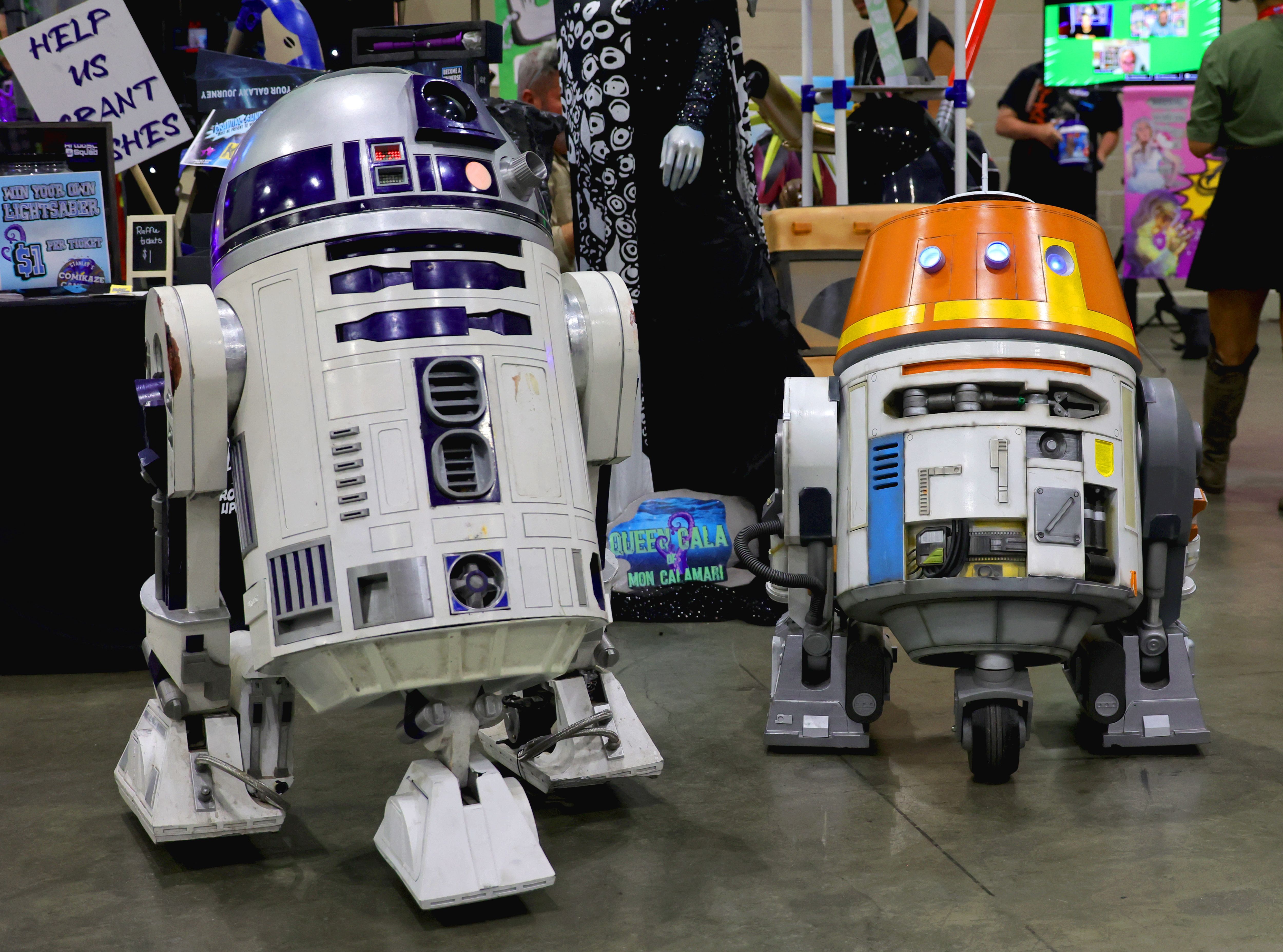
Star Wars isn’t just a distant universe; it serves as an inspiration for scientists, inventors, and tech enthusiasts on our very planet. From robots like R2-D2 to space travel beyond light-years, this franchise has ignited interest and advancements in robotics, artificial intelligence, aerospace, and even materials science. The initial trilogy and prequels may have sown the first seeds, but the latest Star Wars series on Disney+ are giving rise to their own real-world technological breakthroughs.
Consider the show The Mandalorian. The use of practical effects and animatronics, particularly with Grogu and other creatures, has sparked interest in robotics and AI research. These lifelike movements and reactive behaviors make robots more appealing and user-friendly, a concept that scientists studying human-robot interaction have emphasized. As demonstrated by Star Wars droids such as R2-D2, C-3PO, and BB-8, expressive behavior resonates particularly well with children when interacting with humanoid robots, according to a study from the MIT Media Lab.
In much the same vein, the animated series “Star Wars: The Clone Wars” and “Rebels” have delved into future transport and energy technology innovations. Though lightsabers are purely fictional, they’ve stimulated research in plasma and energy-containment systems. The creative designs of starfighters and warships have also sparked aerospace engineers’ imagination regarding propulsion and materials science. For example, NASA and SpaceX engineers often draw inspiration from sci-fi when brainstorming future spacecraft designs, admitting that these fantasy concepts help expand the horizons in real rocket science. In essence, artworks like NASA’s Mars-bound rocket design and their vision of the first human settlement on Mars look as if they were taken straight out of an “Art of Star Wars” coffee table book.
Star Wars has also spurred technological advancements beyond robotics and aerospace, particularly in military and navigation sectors. For instance, as reported by The TechLink Center, Navy researchers developed an immersive virtual training system reminiscent of the holodeck from Star Trek, which allows sailors to rehearse intricate maneuvers in lifelike simulations. This technology is inspired by the holographic battle strategies showcased in films like Revenge of the Sith, where commanders plot starship battles on 3D displays. Reflecting the accurate navigation and space travel planning seen in the Star Wars franchise, modern GPS and autonomous navigation research play vital roles in guiding military drones, submarines, and self-driving vehicles.
The advancements in medical technology have drawn inspiration from the futuristic world of our beloved sci-fi universe. Researchers are delving into robotic-assisted surgery methods and prosthetics designed to mimic the agility of droids and cybernetically enhanced characters, offering a remarkable blend of precision and intuitive motion. A U.S. News slideshow highlights prosthetic limbs that resemble robotic appendages from Star Wars, enabling users to manipulate them with finesse and natural movement. Even Mark Hamill, the star of Star Wars, has extended his congratulations to a young amputee whose prosthetic arm is modeled after BB-8!
Just as portable medical tools such as standalone diagnostic systems and handheld scanners get their design ideas from versatile, pocket-sized devices used by both Rebel and Imperial medical personnel, so too might some modern devices be influenced by these fictional counterparts.
In a similar vein, the narratives of Star Wars have inspired advancements in real-world energy technology. The plasma blades of lightsabers and the protective energy shields on starships have sparked interest among researchers as they explore energy-efficient materials and innovative energy containment systems. For engineers and physicists, Star Wars serves not as a guide for construction, but as a catalyst to think beyond current boundaries in the realm of clean energy, force fields, and laser applications.
Everyday objects are starting to reflect the influence of Star Wars, with navy engineers reportedly designing a versatile tool for field use that takes inspiration from lightsabers, combining multiple functions into a single device. Similarly, wearable technology and exosuits take cues from the agility, adaptability, and enhanced strength exhibited by characters like Mandalorians or stormtroopers in their powered armor. The franchise’s focus on gadgets that are both aesthetically pleasing, practical, and adaptable has prompted designers to reconsider the balance between form and function.
As a movie enthusiast, I can’t help but marvel at the profound impact Star Wars has had on our lives beyond just entertainment. From the intuitive navigation in your car that you effortlessly use without giving it a second thought, to the groundbreaking advancements in robotics, aerospace, medicine, energy, and everyday tools, the Star Wars franchise has been a driving force, inspiring innovation. By offering a captivating universe where technology is both cutting-edge and visually stunning, it encourages dreamers, inventors, and creators to push the limits of what’s possible, fueling progress in our daily lives.
Read More
- Mobile Legends: Bang Bang (MLBB) Sora Guide: Best Build, Emblem and Gameplay Tips
- Brawl Stars December 2025 Brawl Talk: Two New Brawlers, Buffie, Vault, New Skins, Game Modes, and more
- Clash Royale Best Boss Bandit Champion decks
- Best Hero Card Decks in Clash Royale
- Call of Duty Mobile: DMZ Recon Guide: Overview, How to Play, Progression, and more
- Clash Royale December 2025: Events, Challenges, Tournaments, and Rewards
- Best Arena 9 Decks in Clast Royale
- Clash Royale Best Arena 14 Decks
- Clash Royale Witch Evolution best decks guide
- Brawl Stars December 2025 Brawl Talk: Two New Brawlers, Buffie, Vault, New Skins, Game Modes, and more
2025-08-23 17:22